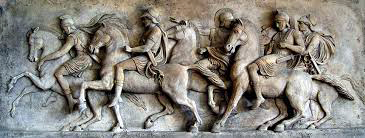Introduction
Rome—whether we mean by it the city or the empire centered on it—is as inescapable from the Christian's interest as Jerusalem. Even though Rome ('Roman/s') is itself mentioned only about two dozen times# in the New Testament, Rome—and everything it implies about living under her shadows—colours everything we read in the New Testament and about the early centuries of the Church. Biblical interpretation of the New Testament will always be flawed if done without an adequate appreciation of life in this empire. We hope these series of essays will help you gain a good measure of this appreciation.

Rome as an empire has had a long and colourful history, one that can claim more than a full millennium of continuous story. While kings, dictators, and emperors come and go, as in the story of any nations, Rome's history may be divided into four periods, each marked by distinct transitions. The first takes the story from its founding by Romulus to the rejection of King Tarquin, when the city-state was re-founded as a Republic. The Republic came to an end with the murder of Julius Caesar and the resolution of the civil war that followed when Octavian (Augustus Caesar) became the first emperor-dictator and ushered in the period we call the Roman Empire, of which the first three centuries are called, collectively, 'the principate.' The empire made a drastic shift when Constantiine converted to Christainity in 313 AD, and shifted the capital of the empire to Byzantium and renamed it Constantinople.
As Greg Woolf observes in his excellent history of Rome, "Fixing the end of the Roman Empire is not easy. Certainly those emperors who defended Constantinople when the Arabs besieged it in 717 considered themselves Romans. So too did their successors right up until Constantinople finally succumb, not to Arabs but to the Turks, in the fifteen century. We do not have to agree with them, but any other date we pick is arbitrary."
With this we turn to survey the various periods of Rome's history.

©Alberith, 2019